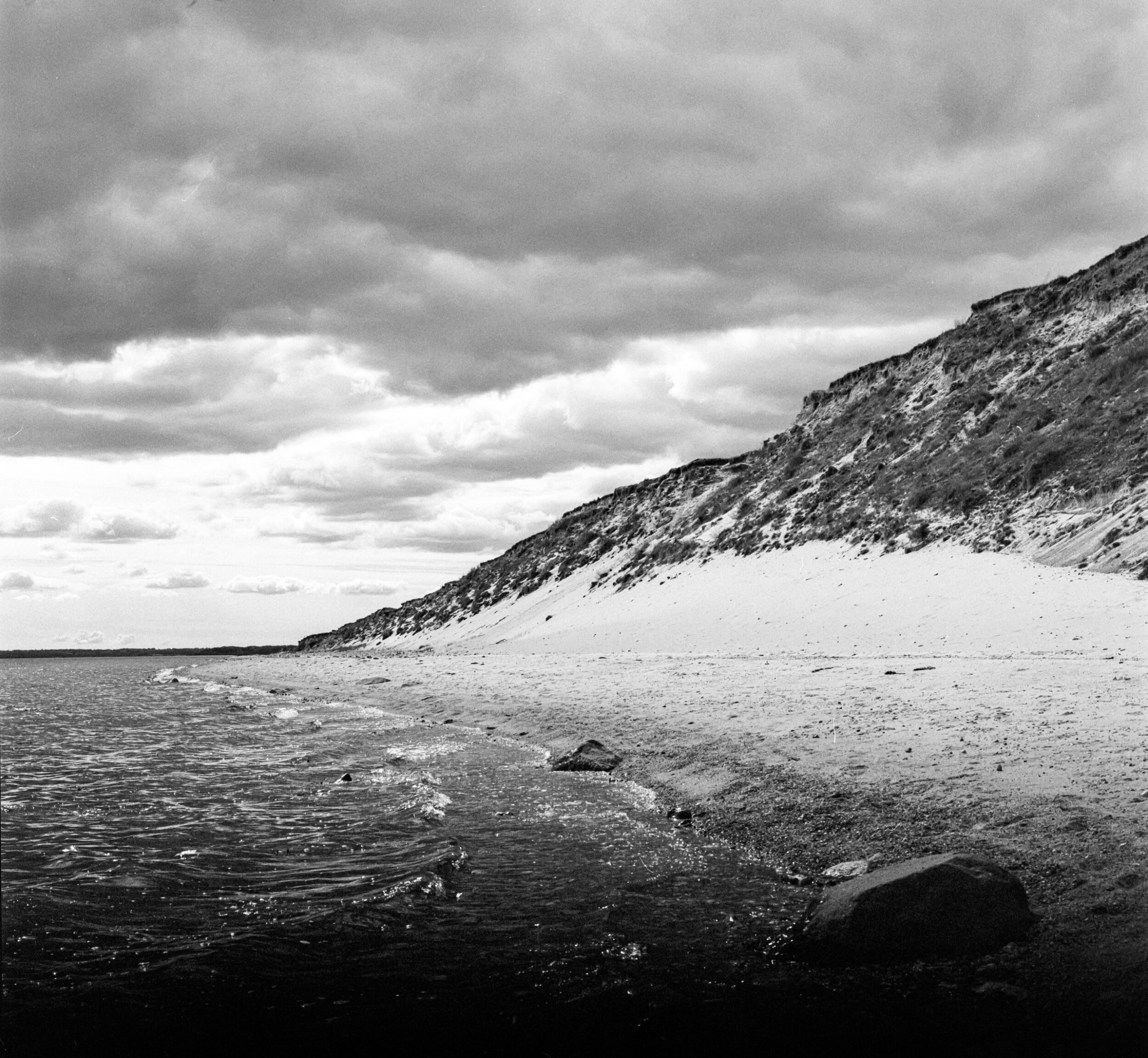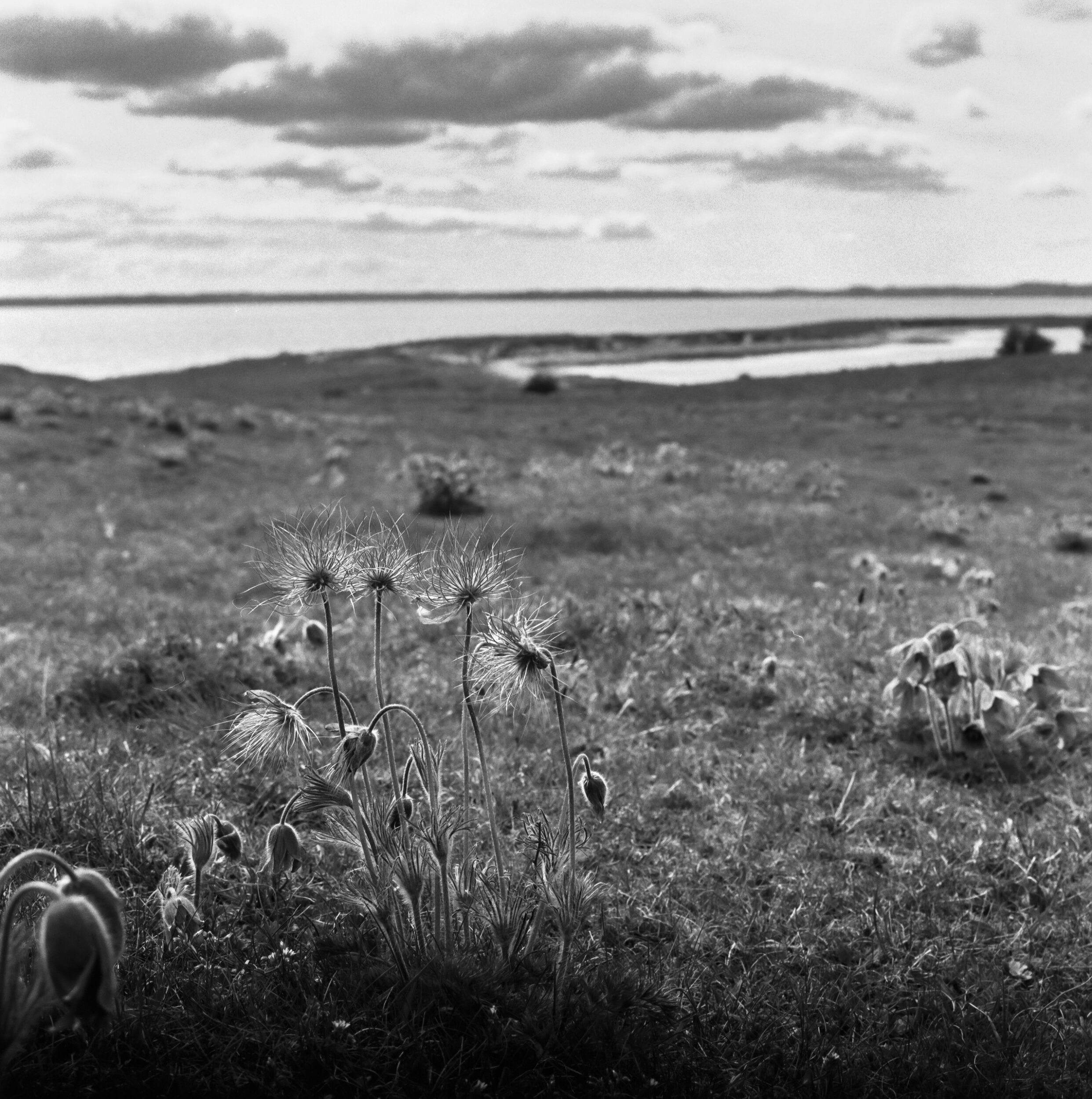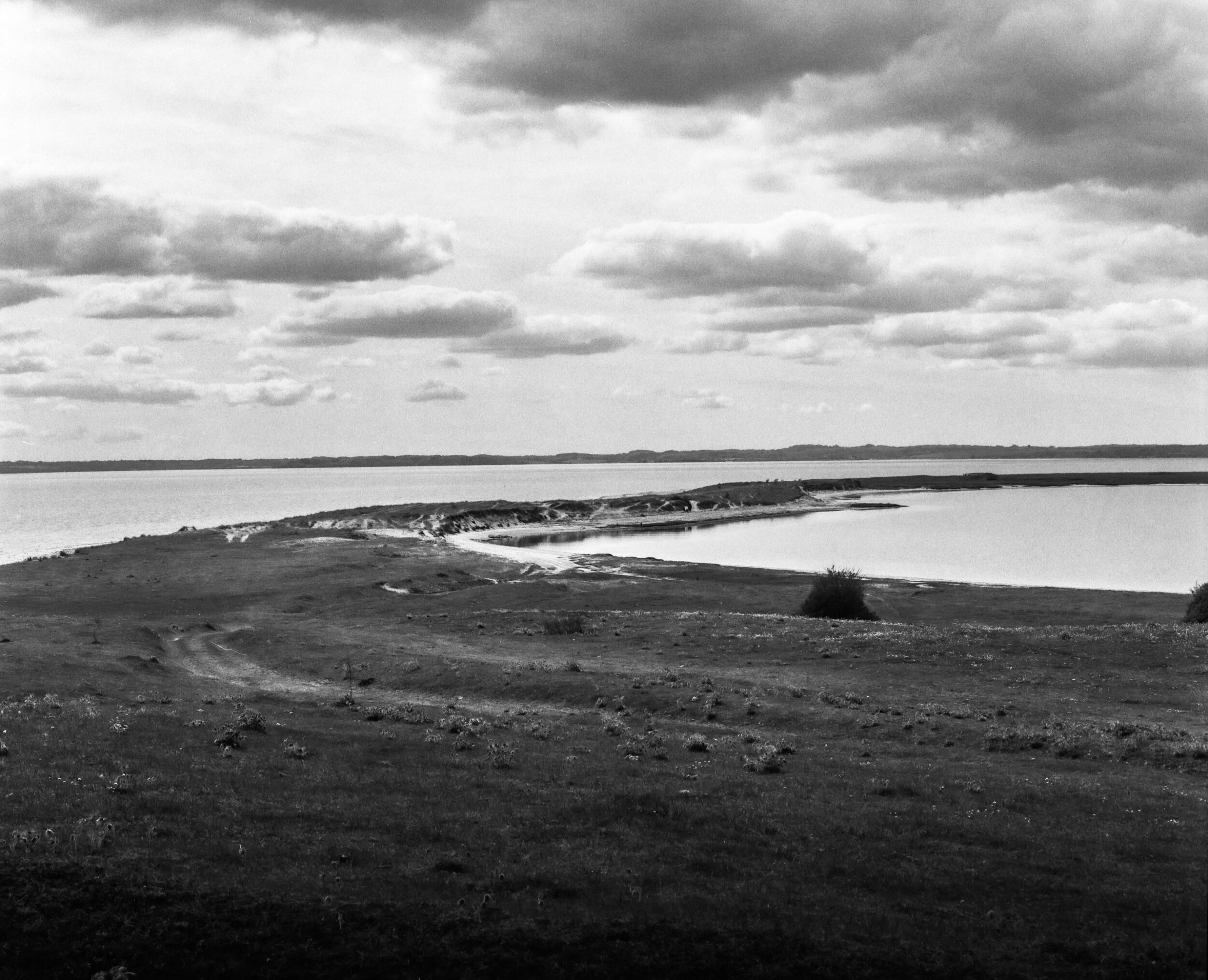From a technical point of view these photos are a complete failure. From an artistic perspective however, that’s a different story.
The photos show the site Halk skydeterræn in southern denmark – a stunning open grasland, that is used for military training from time to time. Luckily, no one was to be seen when I visited the place.

All images are taken with the Mamiya RB67 on Ilford HP5 black and white film. After developing the film it quickly became obvious, that there was something wrong with either camera or lens: Almost one third of each frame was unexposed. My very first guess was that something during the development of the film went wrong, but upon closer inspection it became clear that the unexposed area always was located at the bottom of the image — independent of the orientation of the photo (landscape or portrait). So the fault clearly couldn’t be a result of the development process.

This was the only film from this trip to denmark where this behaviour occured. That gave me a clue: Because HP5 is ISO 400 and all other photos were taken with Delta 100 wich is (as the name suggests) ISO 100, all pictures on this film were taken with a shutter speed of 1/400 of a second. So there seems to be a synchronization error between the shutter (wich is located in the lens on the Mamiya RB67 system) and the mirror-assembly in the camera body. Normally when taking a picture, the following happens in the camera: The shutter in the lens closes, the aperture starts stepping down and the mirror and light trap in the camera body flip up to open the light path to the film. Then the shutter opens for the set amount of time and closes again.

With my camera (or lens) it must be, that the shutter opens too early – when mirror and light trap aren’t fully moved out of the way. Because they flip to the top of the camera, the bottom of each frame is therefore unexposed. Further experimentation has to show whether this is a problem with the camera body or with the lens.

From an asthetical point of view however, this roll of film is far far from wasted. In my opinion, the accidential black gradient to the bottom of each picture gives these shots a very unique and authentic feel.
